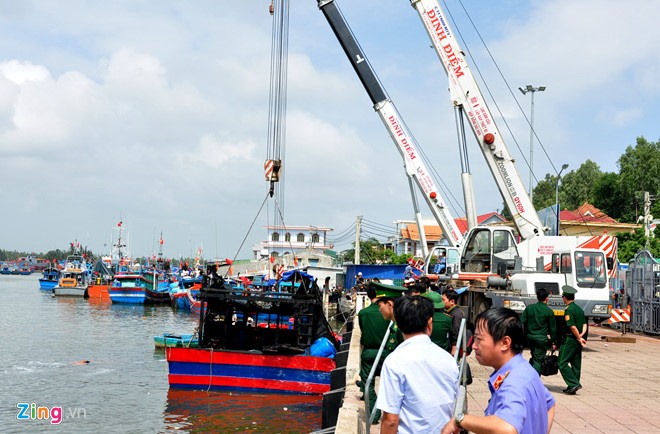 Society
Society

" />Several marine channels like Cửa Lò in Nghệ An Province, Sa Kỳ in Quảng Ngãi and Thị Vải in Bà Rịa – Vũng Tàu have not been dredged in years because authorities have been unable to identify dumping sites to dispose of the sludge after dredging.
 |
| Sa Kỳ Port in the central province of Quảng Ngãi VNS File Photo. |
HCM CITY — Several marine channels like Cửa Lò and Sa Kỳ in the central provinces of Nghệ An and Quảng Ngãi and Thị Vải in the southern coastal province of Bà Rịa – Vũng Tàu have not been dredged in years because authorities have been unable to identify dumping sites to dispose of the sludge after dredging.
Hà Hoàng Việt Phương, director of the Quảng Ngãi Province’s Department of Transport, said hundreds of vessels enter and leave Sa Kỳ Port every day, but two vessels cannot enter and leave at the same time because the channel is too shallow.
The province plans to dredge Sa Kỳ Port next August but authorities are still looking for sites to dump the sludge dredged from it, Phương said.
According to the Việt Nam Maritime Administration, the Northern Việt Nam Maritime Safety Corporation (VMS North) sought permission to dump sludge in the sea after dredging the Hòn Gai – Cái Lân channel last July. But, after considering it, the Ministry of Natural Resources and Environment said VMS North had to find dumping sites on land.
But last year Nghệ An Province authorities permitted the disposal of sludge from the Cửa Lò navigation channel in the sea, but the dredging work has been delayed by paperwork.
A spokesman for the Cái Mép International Terminal (CMIT) said Cái Mép Port handles cargo bound for Europe every week, but most imports and exports are transshipped through another country because large vessels (with 18,000-22,000 TEUs capacity) require a draught of more than 14 metres while Cái Mép Port is only 12 metres deep.
CMIT representative said the port has been unable to get permission despite several attempts to dump the sludge at sea, and this has delayed the port dredging work.
An alternative plan by the Việt Nam Maritime Department to dispose of the sludge on land requires many formalities related to environment protection to be completed.
Đỗ Minh Hải, director of the Quảng Ngãi Province Department of Natural Resources and Environment, said the dredging of Sa Kỳ Port has yet to begin because of environmental issues related to the dumping of sludge afterward.
The dumping spot that was identified was some 5 kilometres offshore and three to 7km from the dredging site.
But Quảng Ngãi authorities suspended the project due to concerns the dumping could pollute nearby Mỹ Khê Beach.
Lack of dumping site planning
The Ministry of Transport admitted there are no plans for dumping sites.
Nguyễn Văn Cấn, head of the Sea and Islands Division at the Hải Phòng Department of Natural Resources and Environment, said with over 40 ports in operation, the city has to dredge about 3 million cubic metres of sludge from navigation channels every year.
But authorities cannot permit the dumping of sludge at sea, and this has to be done on land, he said.
Tạ Đình Thi, acting general director of the Việt Nam Sea and Island Department, said the need to identify dumping sites at sea has become an “urgent issue” across the country.
However, a plan for this is set to be approved by the National Assembly not earlier than 2020, he added. — VNS




